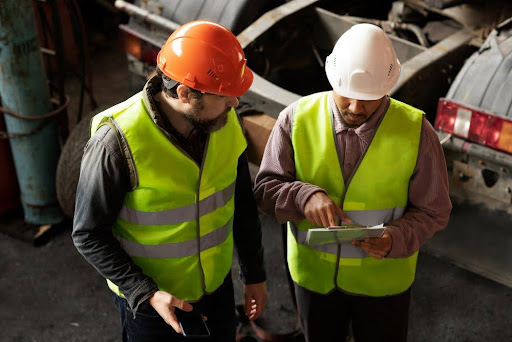The UK’s construction sector, a towering pillar of the national economy, reached a staggering peak of £132,989 million in new projects in 2022. Yet, beneath these impressive figures lies a stark, grim reality: the unrelenting toll of fatalities and injuries. Each year, the construction sites across the UK, amid their bustling activity, emerge not only as hubs of development but also as some of the most hazardous workplaces in the nation. This situation elevates the conversation about hazard protection in construction from policy discussions to undeniable necessities.
Understanding the Risks
Before highlighting the numerous measures necessary to address this critical safety issue, we must first confront the stark realities of the risks that shadow the construction world. The Health and Safety Executive (HSE) provides a sobering perspective on this industry, which forms a mere 5% of the UK’s workforce.
Yet, in a startling contradiction to its size, the construction sector cast an ominous shadow over the landscape of workplace hazards between 2022 and 2023. It accounted for 33% of all fatal work-related injuries and 7% of all non-fatal injuries reported. What are the causes of these tragedies? The usual suspects falls from heights, being struck by moving objects, contact with electricity, and exposure to harmful substances. Each is a reminder of the perilous ground that construction workers tread daily.
The Need for Comprehensive Safety Measures
In response to these alarming statistics, it’s critical for every employer in the construction sector to adopt a fortress of safety measures. These are not mere formalities but lifelines anchored in a comprehensive risk assessment, a detailed safety policy, and an all-encompassing training program.
Any measure adopted to mitigate potential hazards without these three elements in place may not deliver the desired outcome. An all-encompassing training program, for example, ensures site workers are furnished with the necessary know-how to handle dangerous machinery and a certificate to prove this.
In the UK, the standard for this type of training has been the Construction Skills Certification Scheme (CSCS), which comes with certification in the form of a CSCS card. How much is a CSCS card? This depends on a host of factors, including but not limited to the type of CSCS card, level of qualification required, cost of the CITB health, safety & environment test, and regional variations. However, you can expect to spend no less than £30.
Indispensable Safety Measures on Construction Sites
1.Scaffolding and Guardrails
In the towering world of construction, scaffolding and guardrails are not just structures but safeguards. They must be crafted, erected, and dismantled by competent hands, adhering to stringent standards set by regulatory authorities. These structures are barricades against the dangers of working at heights, shielding workers from the perilous dangers of gravity.
2.Safe Entry and Exit Points
The ingress and egress to a construction site are more than mere transition points. They are strategic pathways demanding careful planning to avoid congestion, confusion, and collisions. These routes must stand out as clear, well-lit beacons, free from obstacles, ensuring a safe passage for the footfalls of workers and the movement of vehicles.
3.Lockout/Tagout (LOTO) Procedures
In the intricate machinery of construction sites, Lockout/tagout procedures act as vital sentinels against the spread of hazards such as electricity, gas, water, or fire. These safety measures involve locking or tagging switches, valves, or plugs that control energy sources to prevent them from being accidentally activated or reconnected. Workers must be versed in the ritual of these procedures, ensuring that these energy sources are tamed before any maintenance begins.
4.Controlled Exposure to Dust, Fumes, and Noise
Construction sites must implement a hierarchical system of controls to combat imperceptible foes such as dust, fumes, and commotion. This intricate problem encompasses engineering controls, administrative strategies, and the last line of defence, PPE. It involves a complete environmental transformation of the construction site, aiming to eliminate health hazards entirely rather than merely controlling them.
5.Personal Protective Equipment (PPE)
As the last line of defence against injuries, PPE occupies a prominent position. Helmets, mittens, goggles, earplugs, masks, boots, and high-visibility apparel are all included in this arsenal. Their proper installation, utilization, and upkeep are not merely recommendations but requirements. Therefore, personnel must be proficient in using PPE to protect their health from concealed hazards on the job site.
Conclusion
These measures form the blueprint of a new era in the UK’s construction sites. They are the tools to forge a workplace where risks are not just minimized but eliminated, where the health and safety of workers are not afterthoughts but forethoughts. By implementing these strategies with diligence and resolve, contractors can safeguard lives and shape an industry that is as safe as it is productive, an industry that not only builds structures but also nurtures the well-being of its builders.





Be First to Comment